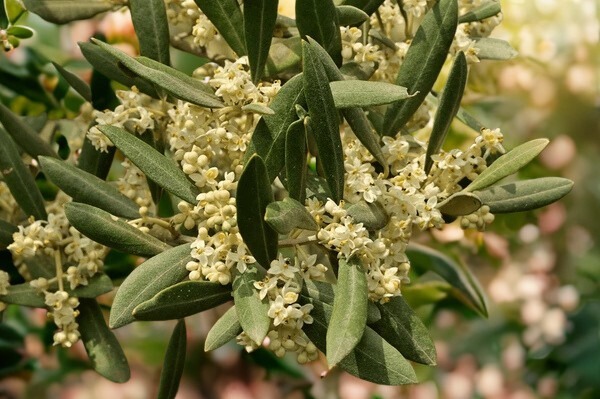OLIVE GROWING
Understanding Fruit and Flower Drop in Fruit Trees: Causes and Remedies

At the 5th International Conference on Sustainable Agriculture and Biosystems, researchers in Iran presented findings on why fruit and flower drop occurs in fruit trees and what growers can do to reduce losses. Drawing on their work, we explore the phenomenon of fruit and flower drop, the underlying causes, and practical remedies for orchard managers.
The Role of Fruit Trees in Agriculture
Fruit trees contribute significantly to agricultural economies across the world. Their production supports farm income, provides employment for skilled horticulturists, and underpins industries ranging from fresh produce to processing and food manufacturing. Cultivation involves a complex mix of practices: careful irrigation management, balanced fertilisation, pruning, pest control, and the application of modern technologies. Beyond economics, fruit trees are valued for their nutritional contributions, supplying sugars, oils, proteins, vitamins, and essential minerals through both fresh consumption and processed goods.
The Phenomenon of Fruit and Flower Drop
Fruit and flower drop is a natural occurrence in many tree species. Its extent varies according to cultivar, climate, soil type, and orchard practices. In some cases, drop is beneficial, helping the tree regulate excessive fruit load through “natural thinning.” But when drop is excessive or occurs at the wrong stage, it becomes detrimental, reducing yields and profitability.
Researchers typically divide drop into three categories:
-
Natural Drop: This type results from competition between a very high number of flowers. Up to 90% of flowers and fruitlets may be shed in some species, but the remaining fruit usually develop adequately. Growers sometimes assist by thinning to ensure the fruit that remain receive sufficient nutrition and reach high quality.
-
Abnormal Drop: This type is more damaging because it affects flowers and fruits at various stages of development, including larger fruit, often reducing yields significantly.
-
Extreme Temperature Drop: This occurs during periods of hot, dry weather (often around June in many regions). While widespread, it usually has limited impact on the final crop load.
Environmental Factors
-
Extreme cold or heat events can damage blossoms or young fruit.
-
Strong winds, particularly dust-laden storms, may strip flowers and fruit from trees.
-
Heavy rainfall or hail can injure delicate blossoms.
-
Excessive direct sunlight can cause sunburn, leading to premature fruit drop.
Mechanical Factors
-
High-pressure pesticide or nutrient spraying can dislodge flowers.
-
Over-application or incorrect doses of sprays may also contribute to flower drop.
Physiological Factors
-
Poor pollination and failed fertilisation result in flowers dropping.
-
Over-competition for nutrients between flowers and developing fruit increases drop.
-
Nutrient deficiencies, especially nitrogen and zinc, play a role.
-
Irregular irrigation - including overwatering that suffocates roots - can trigger drop.
-
Shallow soils limit root systems, reducing nutrient uptake and increasing drop.
-
Weak or diseased leaves caused by pests, fungal infections, or poor tree health reduce a tree’s ability to support fruit.
-
Misuse of plant growth regulators or tank mix errors in spraying can disrupt flowering.
-
Infections of flowers or fruit by fungi or insects often lead to drop.
-
Natural ripening and senescence also account for some degree of fruit shedding.
The Science Behind Fruit and Flower Drop
The underlying mechanism of drop is closely linked to plant hormones. As fruits grow, the concentration of auxins (growth-promoting hormones) declines, while ethylene levels rise. This shift lowers the fruit detachment force (FDF), weakening the connection between fruit and tree. The abscission zone (the separation layer) becomes increasingly sensitive to ethylene, causing fruit drop. Environmental conditions such as temperature and humidity interact with these hormonal signals to intensify drop.
Remedies to Reduce Fruit and Flower Drop
Growers can apply several strategies to reduce drop and improve fruit set:
-
Fertilisation: Apply fertilisers well before flowering to build soil fertility. Nitrogen should be supplied before bloom, not after, to avoid negative effects.
-
Micronutrient Sprays: Foliar applications of calcium, zinc, and boron—adjusted for tree age and timing - can enhance pollination and fruit retention.
-
Pruning: Moderate winter pruning balances vegetative growth with fruit production.
-
Girdling: In some fruit tree industries (e.g., apples and pears), carefully removing a ring of bark from branches at flowering can improve fruit set.
-
Irrigation Management: Avoid excessive watering during bloom and fruit set to prevent root suffocation.
-
Growth Regulators: The use of auxin-based products, such as seaweed extracts (rich in auxins, cytokinins, and gibberellins), can delay fruit drop and extend the flowering period.
-
Pest and Disease Management: Prompt control of pests and fungal infections prevents cascading effects on fruit drop.
-
Pollination Support: For self-incompatible varieties, ensure compatible cultivars or introduce pollinators like bees and butterflies.
-
Windbreaks: Plant hedges or wind barriers to reduce wind damage and limit flower and fruit loss.
While some degree of fruit and flower drop is unavoidable, excessive losses can usually be mitigated through careful orchard management. Attention to fertilisation, irrigation, pest control, and pollination provides the best defence against unnecessary drop.
Further Reading and References
Scientific Reference
Al-Dulaimy, A.F.Z., Alalaf, A.H., Al-Hayali, R.E.Y., & ALTaey, D.K.A. (2023). Flowers and Fruits Drop in Fruit Trees … Causes and Solutions: A review. Practical Advice
Presented at the 5th International Conference for Agricultural and Environment Sciences. IOP Conf. Ser.: Earth Environ. Sci. 1158 042010. Read Full Article
Photo credit: “Landscape view of the flowers of an olive tree (Olea europaea)” by Zsolyomi, available on Shutterstock (Asset ID: 2470400251). Licensed via Shutterstock Royalty-Free License.
